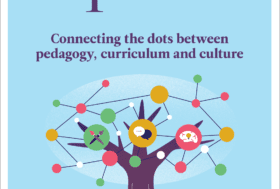Rewards and sanctions in a secondary English classroom
Rewards
In order to maintain a positive and encouraging climate in the classroom it is important that we focus on positive behaviour. Willingham (2005) argues that when praising students we should:
- be sincere and honest
- focus on the work or process, not on the ability or intelligence of the student
- be immediate and unexpected.
By routinely and consistently recognising the positives in our classroom, we encourage students to model our expected behaviour, and encourage others to do the same.]
Sanctions
Using sanctions as a method to demonstrate that actions have consequences is often misunderstood (Bennett 2017). As you develop experience in the classroom, you will find that some sanctions are far more effective in influencing behaviour than others. Bill Rogers (2015) outlines that for sanctions to be appropriate and useful they must:
- Relate to the behaviour and its consequence (e.g. a ‘smoker’s detention’ occasions an educational video that addresses the habit of smoking).
- Be reasonable in terms of the degree of seriousness
- Maintain respect – remain calm and polite. Paul Dix (2018) suggests practising and using the phrase I’ve noticed as there is no judgement and unlikely to attempt to defend themselves.
- Seek to educate the student and, if appropriate, build reparation.
Be aware of how you use punishment; rewards and sanctions should support behaviour management, but strong relationships and established learning routines should be the basis of it (Dix 2017). It is also key that we get to know our students and remain flexible, especially when supporting pupils with SEND (Cowley 2019).
As you watch this video of classroom practice and listen to the interviews, consider how the teacher:
- Makes use of precise praise
- Makes compliance visible
- Establishes and encourage social norms
Whether you’re setting out with a new class and establishing your use of rewards and sanctions, or revisiting your existing approaches, take some time to reflect on what the teacher has done, how they’ve done it, what they might have done differently, and how this might influence your own practice.
You need to be logged in to view this video
References
- Bennett T (2017) ‘Creating a culture: how school leaders can optimise behaviour’ Independent Review for DfE. Available at: https://assets.publishing.service.gov.uk/government/uploads/system/uploads/attachment_data/file/602487/Tom_Bennett_Independent_Review_of_Behaviour_in_Schools.pdf (accessed 11 May 2020)
- Cowley S (2019) Marshmallows and Traffic Cops: Beyond Behaviourism - Motivation and Self-Regulation in the Classroom. Available at: https://impact.chartered.college/article/marshmallows-traffic-cops-beyond-behaviourism-motivation-self-regulation-classroom/ (accessed 11 May 2020)
- Dix P (2017) When The Adults Change, Everything Changes: Seismic Shift in School Behaviour. Carmarthen: Independent Thinking Press.
- Dix P (2018) Behaviour Management in the Classroom. Available at: https://impact.chartered.college/article/dix-behaviour-management-classroom/ (accessed 11 May 2020)
- Rogers B (2015) Classroom Behaviour 4th Edition. London: Sage
- Willingham D (2005) How Praise Can Motivate - or Stifle. Available at: https://www.aft.org/ae/winter2005-2006/willingham (accessed 11 May 2020)





